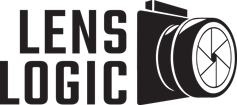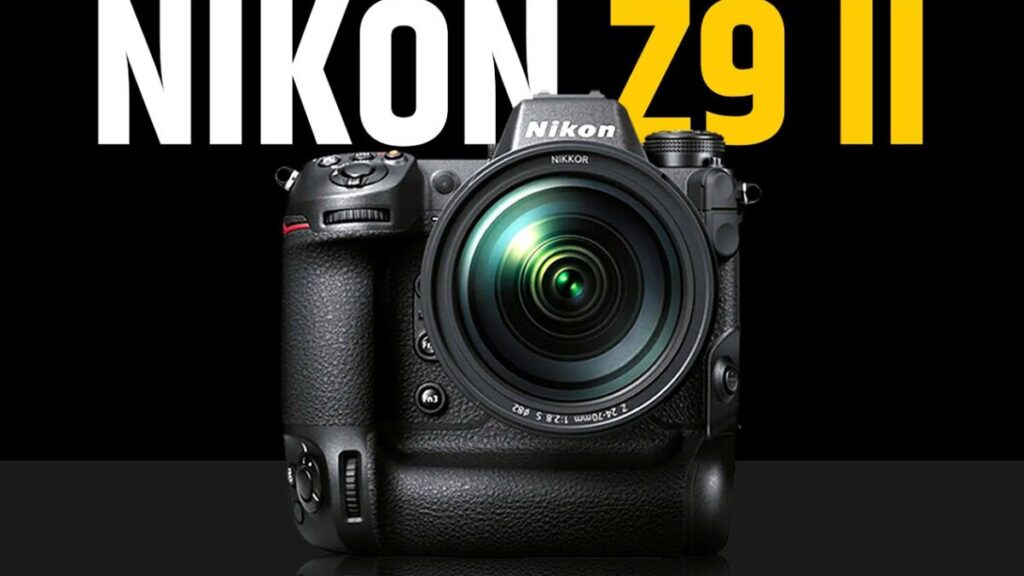Nikon Z9 II: What to Expect from Nikon’s Next Flagship Mirrorless
The Nikon Z9 shocked the world with its incredible features. It had a 45.7MP sensor and could shoot 8K video. Photographers loved it. Now, Nikon is about to release the Z9 II, and people can’t wait to see what’s next.
What will the Z9 II offer? Will it be faster? Will it take even better video? We expect bigger and better things. The Z9 II promises more power and new features that could make it even easier to use.
In this post, we’ll explore what we know about the Z9 II so far. We’ll look at the latest rumors and what improvements we might see. If you liked the Z9, the Z9 II could be even more impressive!

Mason knows photography inside and out. With 15 years of hands-on experience, he’s written about cameras, lenses, and gear of all kinds. He even spent five years as a journalist, diving deep into music and writing sharp, engaging stories. Now, Mason shares his photography knowledge, helping readers find the right gear and perfect their skills. He’s also proud of his unbeatable Wordle streak!
Key Upgrades in the Nikon Z9 II: Burst Speed, Autofocus & More
Burst Speed: Higher FPS and Bigger Buffer
This new camera could be faster, with higher FPS and a larger buffer, helping you capture more action without any delays. The Z9 II might shoot up to 30 fps, a big jump from the original Z9’s 20 fps. This means you can capture more frames in the same amount of time. If you’re shooting fast sports, animals, or anything that moves quickly, the Z9 II will help you catch every important moment.
The larger buffer in the Z9 II will let you shoot more pictures before the camera slows down. Right now, when the buffer fills up, the camera needs to pause while it writes images to the memory card. With a bigger buffer, you’ll shoot more and wait less, letting you capture the action without interruption. For photographers, a higher FPS and a bigger buffer are key. If the Z9 II delivers on these upgrades, it will help you keep up with fast action.
Video Capabilities: More 8K Features, Advanced 4K
If you’re into video, you’ll want to hear about these cool upgrades that might be coming. The Nikon Z9 already shoots 8K video at 30fps, but the Z9 II could do 8K at 60fps. This would make your video look even smoother. Imagine filming fast scenes or action shots, and still getting sharp, clear details. It’s a big deal for filmmakers who need top-notch footage.
The Z9 II is also expected to improve 4K video. Rumors say it could shoot 4K at 120fps. That’s perfect for slow-motion shots. If you love capturing fast action or dramatic moments, this would make your videos even more stunning. A big issue with cameras is overheating during long shoots. The Z9 II might fix this problem. It’s rumored to have a better cooling system so you can film for hours without worrying about the camera getting too hot. This would help when filming long interviews or big events.
Autofocus System: Improvements in Tracking and Eye Autofocus
The Nikon Z9 II is expected to have a much better autofocus system than its predecessor. It should lock onto eyes faster and more accurately, making it easier to get sharp photos of people and animals. This is especially helpful for portrait and wildlife photographers who need quick, reliable focus. Tracking fast-moving subjects will likely be much better on the Z9 II. The camera should follow athletes, animals, or any other fast-moving object with ease.
The autofocus system will likely predict where the subject is going, staying focused even when the subject moves quickly or changes direction. The Z9 II could also have AI-powered autofocus. This means the camera can recognize faces, eyes, animals, and even vehicles. With AI, the camera could focus faster in tricky situations like crowded places or low light. It will make shooting simpler, so you won’t miss a shot. These upgrades could make the Nikon Z9 II one of the best cameras for photographers who need speed, accuracy, and reliability.
Technology Upgrades: AI, Heat Dissipation, and More
The Z9 II could have AI autofocus. This means the camera can understand what it sees and focus faster on things like faces, animals, or moving objects. With this upgrade, photographers will get sharp, clear pictures, even when their subjects are moving fast. AI could make the camera smarter, making it easier to take photos in busy or tricky places.
Another big upgrade could be better heat control. The Z9 was great for video, but it sometimes overheated when shooting 8K video for too long. The Z9 II might fix this problem. It could have a better cooling system, letting you shoot longer without worrying about the camera getting too hot.
The Nikon Z9 II could also get faster wireless transfers. This would let you send photos or videos to your computer or phone much quicker. We may also see better image stabilization for smoother photos and videos when you’re holding the camera in your hands. These small improvements would make the Z9 II even more powerful and fun to use.
Nikon Z9 II vs Z9: What’s Changed in the Next Flagship Mirrorless
The Nikon Z9 is an incredible camera, but the Nikon Z9 II is expected to be even better. Let’s take a look at the key differences between the two.
Key Differences
- Faster Burst Speed: The Z9 can shoot at an impressive 20 frames per second (fps), but the Z9 II might push that to 30fps. This is a game-changer for capturing fast-moving subjects like athletes or wildlife, giving you more opportunities to snap the perfect shot without missing a beat. With the Z9 II, you can shoot faster and worry less about losing the action.
- Enhanced Video Capabilities: Both cameras can shoot 8K video, but the Z9 II is rumored to handle 8K at 60fps, delivering smoother and more fluid footage. For 4K, the Z9 II might hit 120fps, giving you impressive slow-motion potential. If video is a big part of your work, the Z9 II could be your go-to for higher-quality filming.
- Smarter Autofocus: The Z9 already has speedy autofocus, but the Z9 II could raise the bar with AI-enhanced autofocus. This improvement would make it even better at tracking moving subjects like athletes or wildlife keeping them sharp even as they zoom across the frame. For photographers who rely on precise focus, this could be a game-changer.
- Better Heat Management: Both the Z9 and Z9 II can shoot for extended periods, but the Z9 II is expected to handle heat more effectively, even when recording 8K footage for hours. No more worrying about overheating during long shoots just focus on your craft and shoot longer without interruptions.
- Dual Processors for Speed: The Z9 II might come with two processors, giving it a performance boost over the Z9. Expect faster response times, quicker burst shooting, and smoother overall operation. This upgrade means the Z9 II will be able to keep up with fast-moving subjects and large files without lag or slowdowns.
- Longer Battery Life: Expect better battery performance from the Z9 II, meaning more time to shoot before needing to recharge. This improvement is ideal for those who spend long hours on shoots, whether taking photos or filming and don’t want to constantly worry about their power levels.
- Faster Memory Cards: The Z9 II might support faster memory cards compared to the Z9. This would reduce write times, allowing for quicker file storage—especially useful when shooting high-resolution images or long video clips. It’s a subtle upgrade, but one that can help streamline your workflow and avoid delays.
- More Customization and Comfort: The Z9 II is rumored to offer more customizable settings, so you can tailor the camera’s controls to your preferences. In addition, it might have an improved grip design for added comfort during long shooting sessions. Small upgrades like these make the Z9 II even more user-friendly and enjoyable to use for extended periods.
Why Upgrade to the Nikon Z9 II?
- Faster Performance: The Z9 II should be faster than the Z9. You’ll be able to take more photos in less time. This is perfect if you shoot sports or fast action and want to capture every moment without missing anything.
- Sharper Autofocus: Expect the Z9 II to have better autofocus. It will lock onto faces, animals, and moving subjects quicker and more accurately. If you like shooting in low light or fast-moving situations, this upgrade could help you get sharper, clearer shots.
- Better Video Features: The Z9 II will likely offer improved video. It’s expected to shoot smoother 8K video and faster frame rates. If you make videos, these updates could make your work look more professional.
- Longer Battery Life: The Z9 II is expected to last longer on a single charge. This means you won’t have to worry about changing batteries during long shoots.
- More Reliable for Pro Work: The Z9 II will bring all these upgrades together into a more reliable camera. If you want the latest features and better performance for photography or video, the Z9 II is shaping up to be a smart choice.
Price and Market Position: Nikon Z9 II Price Expectations
When comparing the Nikon Z9 to the upcoming Nikon Z9 II, price plays an important role. The Z9 launched at $5,500, making it a top choice for professionals. The Z9 II will likely have a similar price but might be a little higher or lower, depending on the new features.
The Z9 II will probably be priced close to the Z9, which costs about $5,500. Since the Z9 II has faster performance and better video options, Nikon could raise the price. But if Nikon wants to stay competitive, the price could stay the same or even drop.
Market Comparison: Z9 II vs Competitors
Canon EOS R3
- Burst Speed: The Nikon Z9 II is expected to shoot 120 frames per second at full resolution. This is perfect for capturing fast action, like sports or wildlife. In comparison, the Canon EOS R3 shoots 30 frames per second. The Z9 II’s faster speed could give photographers more chances to get the perfect shot in high-speed situations.
- Video Quality: The Nikon Z9 II might offer 8K video at 30 fps, making it great for ultra-sharp, high-quality videos. On the other hand, the Canon EOS R3 shoots 6K video at 60 fps, which is still impressive and smooth. If you want the highest video quality, the Z9 II’s 8K could be the way to go, but the R3’s 6K is more than enough for most projects.
- Autofocus and Tracking: Both cameras are likely to have great autofocus systems. The Canon EOS R3 uses Dual Pixel CMOS AF II, which is fast and tracks subjects very well. The Nikon Z9 II may have a similar system, building on the Z9’s 493-point autofocus. While the Z9 II might not track as fast as the R3, it should still perform well in most situations.
Sony A9 III
- Speed: The Nikon Z9 II is expected to shoot 120 frames per second, making it a powerhouse for fast-moving scenes like sports and wildlife. The Sony A1 II hits 30 frames per second, which is fast, but not on the same level. If the Z9 II delivers, it could be the better choice for photographers who need to freeze every split-second detail.
- Video: Both cameras promise 8K video at 30 frames per second, ensuring crisp, high-quality footage. The Z9 II might have an edge in 4K recording, possibly reaching 120 frames per second for ultra-smooth slow motion. The A1 II still delivers incredible video, but if you need high-speed recording, the Z9 II could be the better pick.
- Autofocus: The Sony A1 II features Real-Time Eye Autofocus, built for precision tracking. The Nikon Z9 II is expected to include a 493-point autofocus system, designed to keep up with fast action. Both cameras aim to track moving subjects effortlessly, but Sony’s autofocus tech may have a slight edge in AI-driven subject recognition.
- Sony A9 III: The Sony A9 III is built for speed. It shoots 120 frames per second without blackout. This makes it perfect for sports and wildlife photography. It also has a full-frame stacked sensor for ultra-fast readout. But the Z9 II will fight back with higher resolution and better dynamic range. Its AI-powered autofocus keeps up with fast-moving subjects. Plus, the Z9 II will record 8K videos without overheating, giving videographers more creative freedom.
- Canon EOS R5 II: The Canon EOS R5 II will improve on the original R5, but the Z9 II still holds strong. Canon’s new model may get better heat management and longer recording times. The Z9 II will record 8K RAW internally, something the R5 struggled with. Nikon also offers a robust body design that handles extreme weather. Photographers needing durability and top-tier video specs will find the Z9 II would a better pick.
Release Date and Price: When Will the Z9 II Be Released?
The Nikon Z9 II will likely be announced in late 2025 or early 2026. Nikon releases their top cameras every 3 to 4 years, and since the Z9 came out in 2021, it’s a good guess the Z9 II will show up around the same time. Nikon also likes to release big cameras close to major events, like the Olympics. The 2026 Winter Olympics start in February, so the Z9 II could be unveiled just before then. This would follow Nikon’s tradition of timing camera launches with big moments.
The original Z9 started at around $5,500. The Z9 II will likely cost about the same, between $5,500 and $6,000. Nikon keeps flagship camera prices close, even as they improve the technology. When the Z9 II arrives, the Z9’s price might drop to make it more affordable for more people. This price change could help more photographers grab the Z9 at a lower price.
Conclusion: Why the Z9 II Will Be a Must-Have for Professionals
The Nikon Z9 II looks like it will be a top choice for professional photographers and filmmakers. The Z9 II will probably offer faster burst speeds. This helps photographers capture quick moments in sports and wildlife photography. Whether it’s a racing car or a bird in flight, the camera will catch it. Filmmakers can expect better video features. With higher resolution and more frame rates, it will shoot sharp, cinematic footage. It will be perfect for films, commercials, and documentaries.
The Z9 II will use smart autofocus that learns and reacts faster. This will make sure your subject stays sharp, even in tricky situations like moving subjects or low light. The Z9 II will be built for those who need the best gear. Whether you’re shooting sports, wildlife, or movies, this camera will give you speed, quality, and smart features to make your work stand out.


